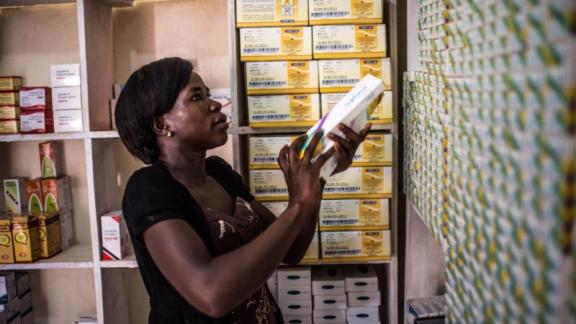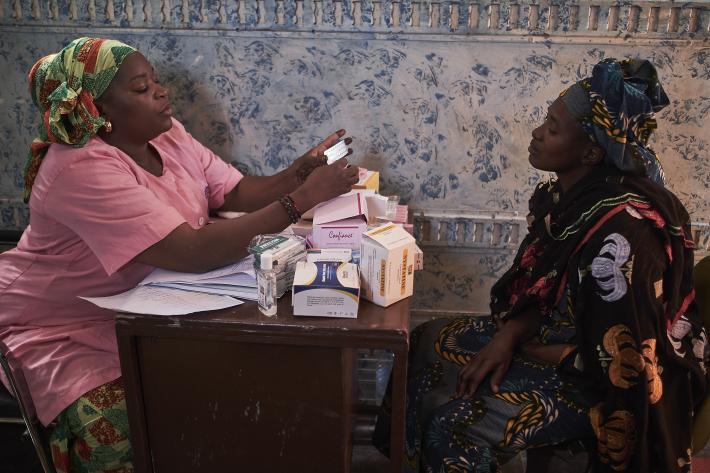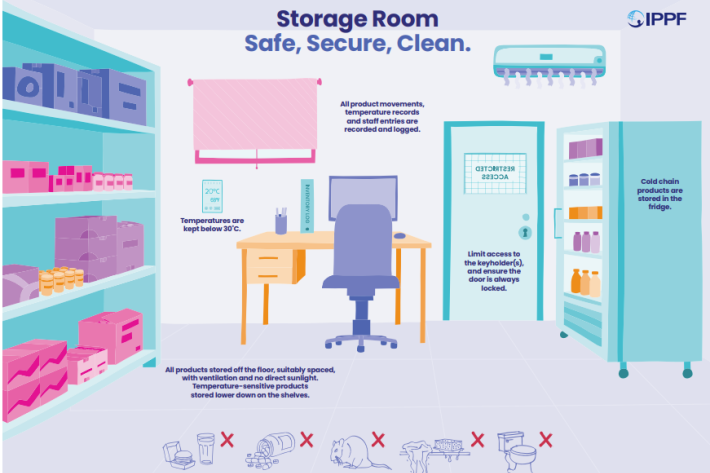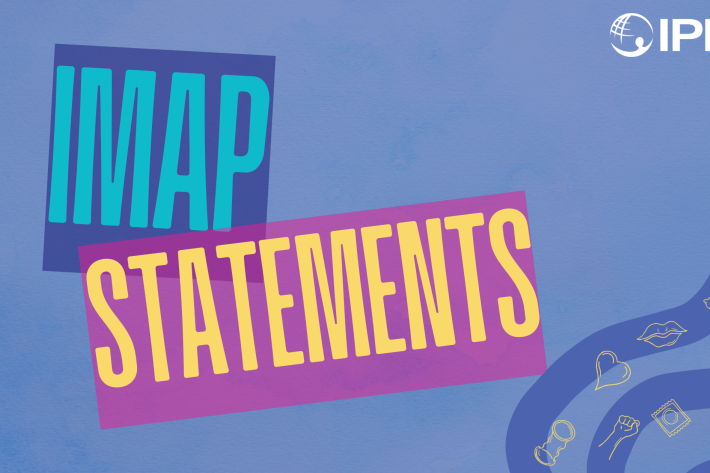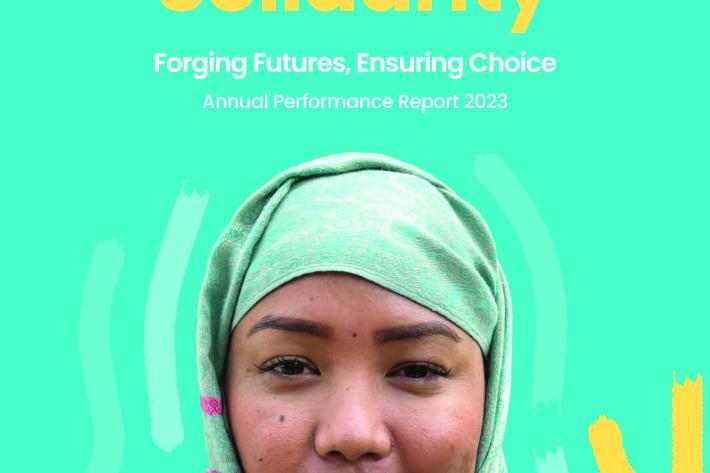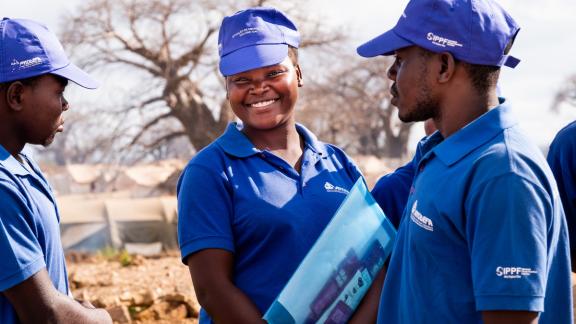Spotlight
A selection of resources from across the Federation
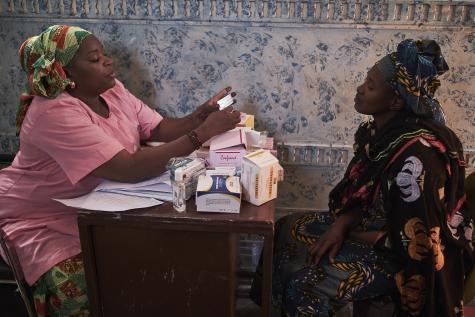
IMAP Statement on advances in emergency contraception
The purpose of this statement is to review newly published data on increasing the effectiveness of levonorgestrel emergency contraceptive pills by using pre‑coital administration or combined with a non‑steroidal anti‑inflammatory drug; the potential use of LNG‑ECP as a regular contraceptive method for infrequent sex; ulipristal acetate which is an established EC method and is now being studied combined with misoprostol for termination of early pregnancy; and the underutilization of low dose mifepristone as an EC method.
Filter our resources by:
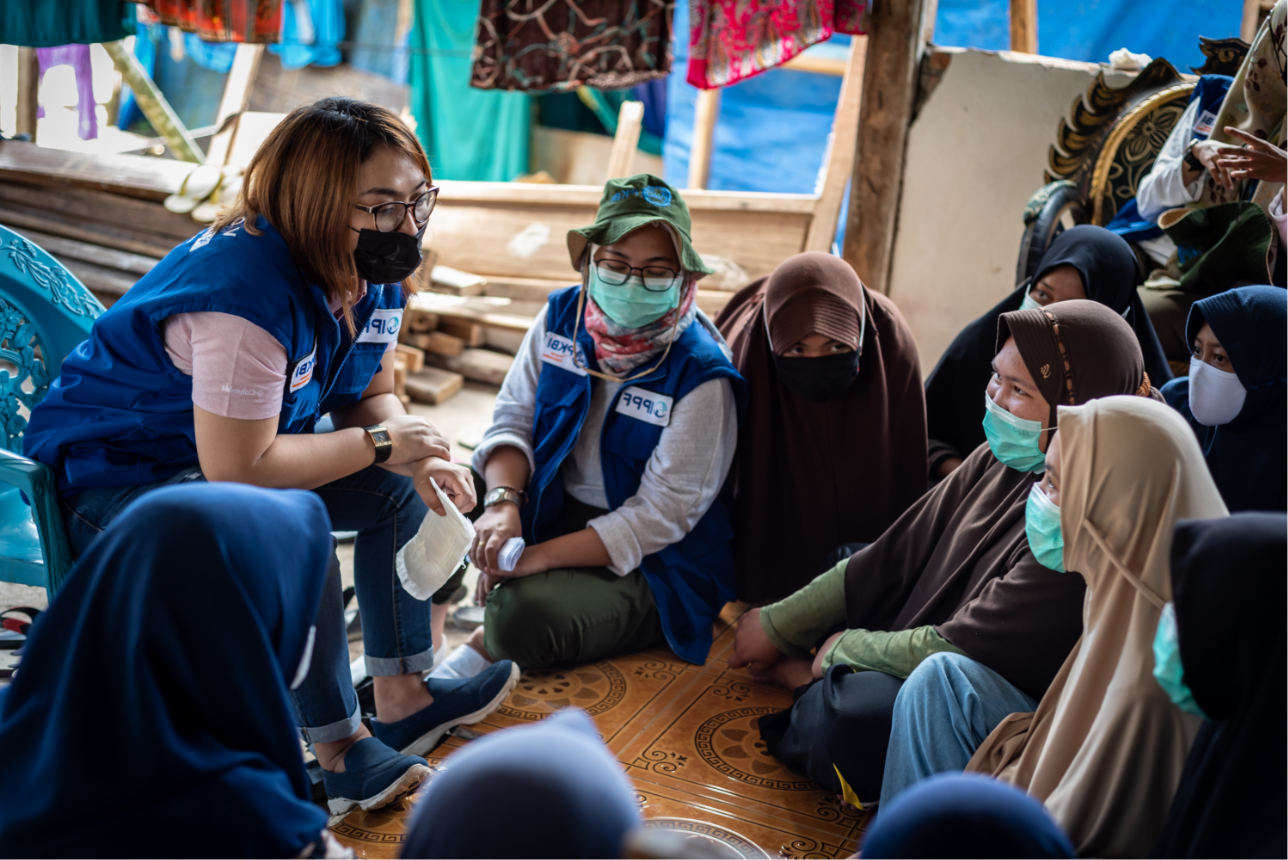
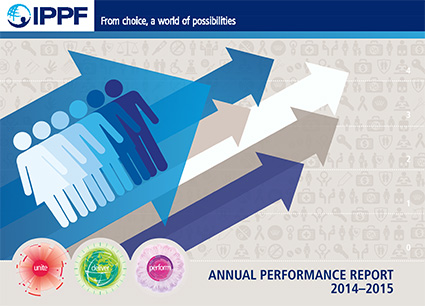
| 30 June 2015
Annual Performance Report 2014-15
2014 was our third year implementing IPPF’s three Change Goals – Unite, Deliver and Perform. We have monitored the trajectory of our growth in performance to date, and are already seeing remarkable success in all three areas, as presented in our Annual Performance Report 2014-2015. Member Associations and collaborative partners in 55 countries contributed to 81 changes in policy or legislation that support or defend sexual and reproductive health and rights. At the regional and global levels, IPPF’s advocacy contributed to 18 changes, of which 12 were advances in safeguarding sexual and reproductive health and rights in the post-2015 development framework. With the delivery of 149.3 million services in 2014, we are on track to achieve our ambitious target of doubling the number of sexual and reproductive health services provided between 2010 and 2015. Over eight in ten clients who accessed services were poor and vulnerable, while almost half of our services went to young people. IPPF’s achievements in 2014 contribute to a strong performance culture where decisions are based on data, organizational learning happens at all levels, technical support is provided to increase effectiveness, and investments are made to support communities most in need.

| 17 June 2015
Financial Statement 2014
Financial Statements for 2014 Executive Summary IPPF’s total income has fallen by US$10.0 million from US$136.1 million to US$126.1 million. This reduction is due to a fall in unrestricted government income of US$2.2 million, a reduction of restricted government income of US$8.0 million and reduced donations in kind of US$2.2 million offset by an increase in restricted grants from multilaterals of US$2.9 million. The total decrease is equally split between unrestricted and restricted income at US$5 million each. With the exception of Australia, all government donors have held level or increased their unrestricted funding to IPPF in the donor currency. However the strengthening of the US dollar has had a significant impact, effectively reducing US dollar unrestricted income by approximately 9% on a like for like basis compared to 2013. Total expenditure has risen from US$132.8 million to US$137.6 million. Unrestricted expenditure has risen from US$76.8 million to US$84.3 million while restricted expenditure has fallen from US$56.0 million to US$53.3 million. The increase in unrestricted expenditure is driven by an exchange loss (US$3.6 million) and the use of designated funds to provide support in a number of areas: support in South Asia for system strengthening (US$1.7 million); provision of support to Member Associations (MAs) to scale up services (US$0.9 million); development of the new strategic framework (US$0.4 million); international advocacy and supporting IPPF Vision 2020 campaign to place sexual reproductive health (SRH) and rights at the centre of the sustainable development agenda (US$0.8 million); and support for resource mobilization at a regional and central level (US$1.4 million). Restricted expenditure levels are driven by the timing of donor funded programmes, which vary on a year-byyear basis. This has resulted in an unrestricted deficit of US$4.6 million before other unrecognized gains and losses and a restricted deficit of US$6.9 million, to generate a total operating deficit of US$11.5 million. After taking into account actuarial losses on the defined benefit pension scheme the resulting net movement in funds was a reduction of US$15.1 million. The level of unrestricted income received was as forecast in the 2014 budget and the expenditure in excess of income levels was funded using approved designated funds (US$6.4 million). This resulted in a small increase in general reserves to US$24.0 million and a fall in designated reserves to US$85.9 million. "The unrestricted funding that our major donors have provided to us over the long term has enabled the Federation’s Member Associations to build sustainable programmes of delivery and advocacy impacting positively the lives of millions of people."

| 16 March 2015
Vision 2020 Gender Report
The second report in our Vision 2020 series, this publication, "SRHR- the key to gender equality and women’s empowerment" sets out how SRHR is critical to gender equality and women’s empowerment across three dimensions. It explores how ensuring universal access to SRHR can promote economic growth, social equity and political participation. Pathways of empowerment This report examines the links between sexual and reproductive health and rights and gender equality. It explores the different pathways of empowerment that girls and women experience, and analyzes how these pathways are affected by sexual and reproductive health and rights. Policy focus and attention given to gender equality and women’s empowerment has been growing over the last decade, and there are some areas where links are established more conclusively. Although there is strong documentation on the health benefits of investment in sexual and reproductive health, until recently the non‑medical benefits, such as higher levels of social and political participation, have been largely ignored, partly because they are difficult to measure. While the social and economic implications of sexual and reproductive health and rights are often overlooked, they are no less real. More attention is needed to explore the links between sexual and reproductive health and rights and other critical areas relating to gender equality, such as the representation of women in political and public life. Methodology and priority themes For the purposes of this report, and in line with accepted wisdom on emerging areas of priority, we focus on the following core areas relating to gender equality: 1) equality in social development, 2) economic participation and 3) participation in political and public life. Within each area, we discuss key links with sexual and reproductive health and rights as well as identifying ways in which these links contribute to empowerment experienced by girls and women. IPPF carried out desk reviews of existing policy research: over 350 references were reviewed on the following focus areas: sexual and reproductive health and rights and the social development of girls and women (including health, education, and freedom from sexual and gender-based violence) sexual and reproductive health and rights and women’s economic participation sexual and reproductive health and rights and women’s participation in political and public life Resources were gathered for review using three main methods: 1) electronic database searching, 2) cross-referencing of reference lists of related articles and reviews and 3) consultation with experts in the fields of sexual and reproductive health and rights and gender equality. Papers were prioritized for inclusion if they met a number of criteria: if they appeared to provide a clear international policy overview of key review themes and evidence given from a rights-based perspective, with statistically proven linkages, case studies and/or findings from qualitative studies; were published recently, and within the last 10 years; were published in English; corresponded most closely to agreed keyword searches; and were cited widely. During the first phase, these methods were used to search the libraries of an agreed group of multi‑lateral institutions; key donors and governments; non‑governmental organizations working in the fields of sexual and reproductive health and rights, gender equality and development; and key global and regional partnerships. Findings were then verified and enriched, with gaps identified and filled, using searches in relevant public health and gender journals, along with regional and national policy reports and studies that fitted the search criteria closely and/or that came recommended.
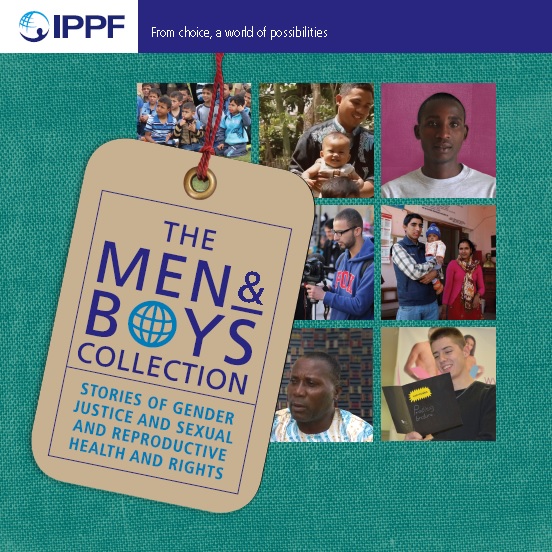
| 07 November 2014
The Men and Boys Collection: Stories of gender justice and sexual and reproductive health and rights
Men are husbands, partners, fathers, brothers and sons, and their lives are intertwined with that of women, children and other men. Across the world, rigid gender norms, and harmful perceptions of what it means to be a man have far reaching consequences on health and wellbeing. However, growing evidence shows that where men and boys are engaged in tackling gender inequality and promoting women’s choices, the resulting outcomes are positive and men and women are able to enjoy equitable, healthy and happy relationships. A new collection of case studies – The Men and Boys Collection: Stories of gender justice and sexual and reproductive health and rights – highlight some of the ways that IPPF Member Associations are supporting gender equality and the sexual and reproductive health needs of men and boys. From Bolivia to Indonesia and Palestine to Zambia – 12 personal stories from 12 countries across the globe provide personal accounts of the journeys that men and boys are making in their sexual and reproductive lives and as champions for gender justice.
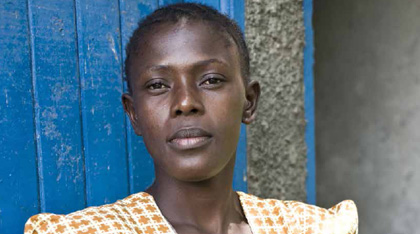
| 01 September 2014
HIV and Stigma: The Media Challenge
Despite the progress being made in the global response to HIV, stigma continues to be a major factor hindering HIV prevention, treatment, care and support, and affecting the overall health and wellbeing of people living with HIV. The media plays an important role in influencing people’s attitudes towards HIV, yet it is far from reaching its full potential. Many governments and funders prefer to focus on service delivery, which has measureable results, whereas it’s much harder to measure the impact of media initiatives that aim to bring about societal change. IPPF jointly with IBT (International Broadcasting Trust) has published this research report “HIV and Stigma: The Media Challenge”, which aims to provide an overview of media initiatives seeking the reduction of HIV-related stigma, while highlighting the case study of Swaziland.
| 13 August 2014
At a Glance 2013
Key facts and figures highlighting IPPF's achievements in 2013. IPPF provided 136.6m sexual and reproductive health services and averted 580,000 unsafe abortions.

| 06 August 2014
Youth and abortion guidelines
Youth and abortion: key strategies and promising practices for increasing young women’s access to abortion services promotes safe abortion access as part of a package of SRHR information and care inspires service providers, advocates and policy makers to eradicate barriers presents tried and tested techniques that can be adapted for a range of programmes explores public health and rights perspectives, to support abortion access encourages and describesa harm-reduction model for legally restrictive settings "There are a whole host of barriers – from cost, to cultural norms and stigma, to service provider attitudes – which prevent young women from accessing timely life-saving and life-enhancing abortion and post-abortion care." Legal abortion is a safe medical procedure, but where it is illegal it is often unsafe and results in high levels of complications and mortality. The right to abortion relates to many established human rights, but young women face specific obstacles to accessing safe abortion including: concerns about their capacity and ability to consent; additional stigma associated with being sexually active especially for unmarried women; restrictive laws, or restrictive interpretation of laws; and lack of youth-friendliness. Integrating with other youth programmes, working with staff to increase their commitment to improving access, focusing on confidentiality and autonomy, using the harm-reduction model and supporting peer outreach are some of the promising practices that improve access. Includes: a case study of a harm reduction approach to abortion in countries where it is illegal examples of work in China and Bangladesh a table of recommended actions with links to relevant resources broken down into: institutional policy and strengthening youth-friendly sexual and reproductive health service provision information, education and communication advocacy youth survey questions health professionals' interview guide guideline development process online resources for the rights argument key statistics and resources for health arguments

| 24 July 2014
“Stigma is still my most serious challenge”
This publication shares the experiences of people living with HIV. Men and women from Ethiopia, Mozambique and Swaziland talk about HIV-related stigma and describe their courage, inspirations, suffering, resilience and determination to trigger change. Their stories demonstrate how stigma and discrimination can hinder access to vital support and care and the prevention, testing and treatment of HIV. National and international organizations working on HIV-related issues have an immense responsibility towards people living with HIV, to change the unjust reality revealed by these personal stories into a better one. We must increase our efforts towards ensuring everyone enjoys a dignified, stigma-free life – one where every human being is valued and free of discrimination.
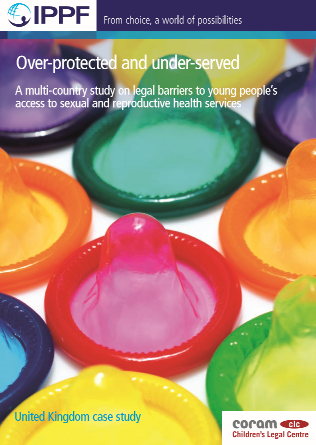
| 08 July 2014
UK: A study on legal barriers to young people’s access to sexual and reproductive health services
The key legal barrier to accessing services in the UK is the almost total prohibition on abortion in Northern Ireland and the need to travel to England and pay for abortion which disproportionately disadvantages young women. Lack of legally mandated comprehensive sexuality education, and lack of legal recognition of people who do not identify within the gender-binary norms or are intersex, also represent significant barriers to access. There are many permissive and facilitative laws and practices in the UK, which should ensure good access to SRH services, and are intended to be protective without hampering access to services, but access is compromised by other factors including: conflict between the stigma associated with younger aged sex (especially for girls) and media and peer cultures endorsing sexual activity bad delivery of sex education by teachers who are uncomfortable with the subject, which reinforces taboos concerns about the confidentiality of services in spite of legal obligations on service providers – especially in schools which often operate their own rules on reporting sexually active teens, and in small rural communities where service providers and pharmacists may know the young person’s family quality of service for LGBT youth may be poorer because of lack of knowledge or understanding of same-sex sexuality or non-binary gender identities most young people and service providers don’t see the law as an obstacle to services though beliefs about the age of consent does prevent some young people seeking SRH services the legal right of schools to refuse to teach CSE and of individual parents to withdraw children from classes reinforces the idea that informing young people about sex is corrupting and that young people have no independent rights regarding information and access to health services where CSE does exist it often focuses solely on the biological and inadequately addresses the law and young people’s rights within it young people report being reliant on information from the internet which includes poor sources of information and porn robust laws against sexual violence are undermined by victim-blaming and the low rate of rape prosecutions and convictions, which prevents people coming forward to report rape access to antenatal care is good and not perceived to be limited by legal issues Northern Ireland has different laws and practices to other parts of Britain and these are less permissive, more restrictive and more likely to present barriers to access. These reflect a more conservative culture which negatively impacts access even where it is not restricted by law. girls are more likely to conceal their or delay accessing services as all pregnancy options are stigmatised - young motherhood, adoption and abortion cultural and religious norms in Northern Ireland promote abstinence before marriage and reinforce stigma around youth sexuality which hampers discussion between young people and their parents the law in NI doesn’t require teaching of LGBT issues having to travel to specialist services represents a high cost, presents difficulties maintaining privacy and acting independently from parents and is a significant barrier for youth in rural areas especially in Northern Ireland which is underserved

| 30 June 2014
Annual Performance Report 2013-14
2013 was our second year implementing IPPF’s three Change Goals – Unite, Deliver and Perform. We have monitored the trajectory of our growth in performance to date, and are already seeing remarkable success in all three areas, as presented in our Annual Performance Report 2013-2014. Member Associations in 66 countries contributed to 97 changes in policy or legislation that support or defend sexual and reproductive health and rights. At the regional and global levels, IPPF’s advocacy contributed to 13 changes, of which ten were advances in safeguarding sexual and reproductive health and rights in the post-2015 development framework. With the delivery of 136.6 million services in 2013, we are on track to achieve our ambitious target of doubling the number of sexual and reproductive health services provided between 2010 and 2015. Eight in ten clients who accessed services were poor and vulnerable, and for the first time ever, almost half of our services went to young people. IPPF’s achievements in 2013 contribute to a strong performance culture where decisions are based on data, organizational learning happens at all levels, technical support is provided to increase effectiveness, and investments are made to support communities most in need.
Pagination
- First page
- Previous page
- …
- 29
- 30
- 31
- 32
- 33
- …
- Next page
- Last page







